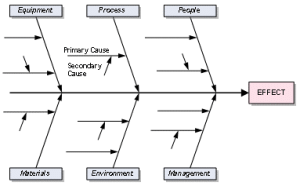 We are educated. We are modern human beings. We make decisions every day. How inaccurate and incomplete can our thinking be?
We are educated. We are modern human beings. We make decisions every day. How inaccurate and incomplete can our thinking be?
I always thought I was a good at logical thinking. Then I went to law school. Law school taught me how to think through an issue more effectively by applying a disciplined structure to analyze facts, to make arguments, and to create consistency in the decisions made.
Your personality type influences how you think. You might shoot from the hip for a fast resolution and clean up any mess later (“ready-fire-aim”); or maybe you delay making decisions or solving problems due to “analysis paralysis” or because you don’t want to upset others; or maybe you make decisions to please others without really addressing or resolving the core issue.
Research now shows that emotions are integral in the decision-making process, but it is still important to be able to analyze and reflect on data, information, and experience to choose the best solution or decision possible and to think about your own thinking. To that end, use these basic decision-making and problem-solving tools to collect, analyze, and play with data to make better decisions.
1. Pro/Con List
Ben Franklin famously wrote about his use of a Pro/Con List. His method involved making 2 lists: pros of an issue on the left and the cons on the right. Next, give weight to each item on the list, maybe using a scale of 1 to 3. Next, Franklin described cancelling out single or multiple items on either side of equal weight (e.g., 2 pros each with a weight of 1 (totaling 2) can be cancelled by 1 con with a weight of 2). Then, see if either side ends up with more items remaining. An interesting comment by Franklin shows that once he went through his analysis, he gave himself another day or so to see if anything else can to mind that he should consider before moving forward.
“Too many problem solving sessions become a battlegrounds where decisions are made based on power rather than intelligence.”–Meg Wheatley
2. SWOT or SOAR
Either a SWOT or SOAR grid is designed to collect and evaluate information about a current situation. SWOT stands for Strengths, Weaknesses, Opportunities, and Threats. Or you can use SOAR from Appreciative Inquiry which stands for Strengths, Opportunities, Aspirations, and Results. Collecting the data in either of these formats will aid analysis and tee you up to form an action plan.
3. Pareto Analysis
Also known as the 80/20 rule, Pareto principle holds that 20% of “inputs” is producing 80% of the desired or undesired outputs. For example: Which products or services are producing 80% of company revenue? Once you collect basic data, this video shows you how to set up a Pareto chart in a spreadsheet.
4. Impact vs. Probability Risk Assessment
This tool is used to assess the possible risks you face. First list all possible threats. Next, using a numeric scale (say, 1 to 10), assess the probability that the threat will occur. Then, assign a value for how great the impact will be if the threat occurs. (Cost is a frequently used measure for impact.) Finally, multiply the probability and the impact numbers to get the “risk” number.
5. Fishbone Diagram
Allows you to determine the root cause of a particular effect. You can use other areas to explore in addition to the ones listed below. For each “cause”, ask what might be contributing to the effect. Then, use the “5 Whys” process get to secondary, tertiary, etc. causes.

Honing your ability to collect and analyze data helps you choose the best framework for your thought process when making big decisions and solving problems for your company. Don’t forget to use these tried and true models to explore situations in your business.
Other tools to explore:
Six Thinking Hats
Pugh Matrix
Process Maps
Polarity Diagram
Scientific Method
